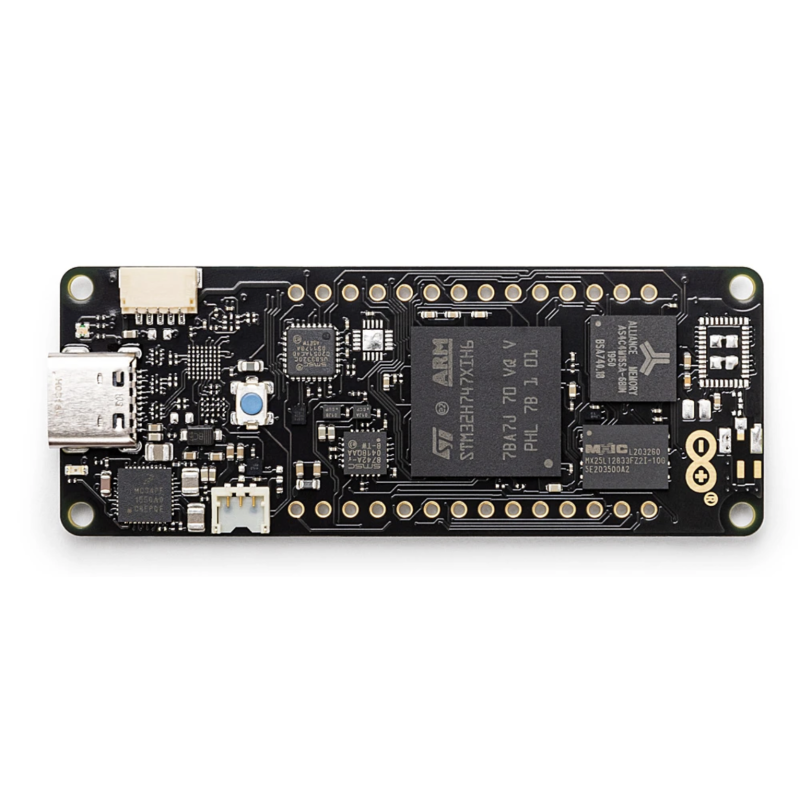

RLX COMPONENTS s.r.o. , Electronic Components Distributor.
RLX COMPONENTS s.r.o. , Electronic Components Distributor.
Portenta H7 Lite Code (ABX00045)
The Portenta H7 Lite is a cost-effective solution, designed for complex environments where radio communication is not suitable or possible. It is perfect for developers who want to leverage the computational power of the Portenta H7, without the need for video output or advanced security features.
The Portenta H7 Lite simultaneously runs high-level code and real-time tasks thanks to its two processors. For example, it can execute Arduino-compiled and MicroPython code at the same time, and have the two cores communicate with one another.
Key benefits include:
The Portenta H7 Lite offers twofold functionality: it can run either like any other embedded microcontroller board, or as the main processor of an embedded computer.
For example, use the Portenta Vision Shield to transform your H7 Lite into an industrial camera capable of performing real-time machine learning algorithms on live video feeds. As the H7 Lite can easily run processes created with TensorFlow™ Lite, you could have one of the cores computing a computer vision algorithm on the fly, while the other carries out low-level operations like controlling a motor or acting as a user interface.
Portenta is the go-to family when performance is key, and the H7 Lite is no exception. We can already envision it as part of a wide range of solutions, including:
Two Parallel Cores
The Portenta H7 Lite’s main processor is the STM32H747 dual core including a Cortex® M7 running at 480 MHz and a Cortex® M4 running at 240 MHz. The two cores communicate via a Remote Procedure Call mechanism that allows calling functions on the other processor seamlessly. Both processors share all the in-chip peripherals and can run:
A New Standard for Pinouts
The Portenta family adds two 80-pin high-density connectors at the bottom of the board. This ensures scalability for a wide range of applications: simply upgrade your Portenta board to the one suiting your needs.
USB-C Multipurpose Connector
The board’s programming connector is a USB-C port that can also be used to power the board, as a USB Hub, or to deliver power to OTG connected devices.